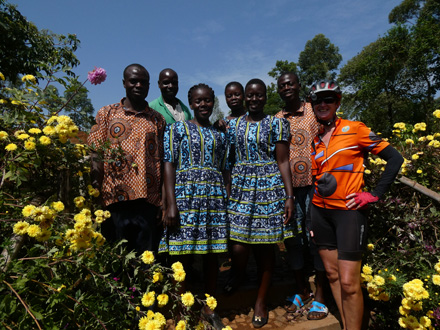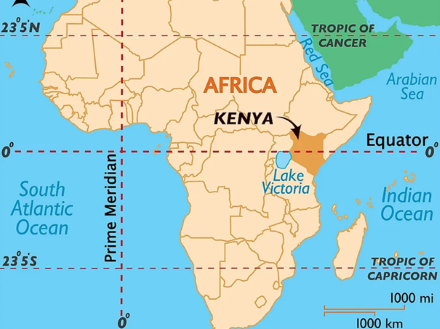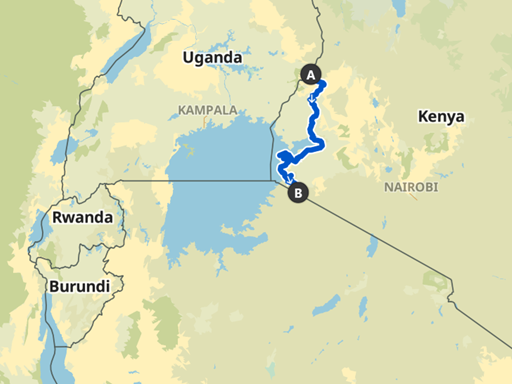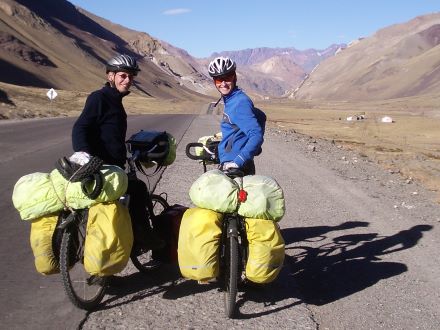
Cycling the Southwestern corner of Kenya, we followed the beautiful shores of Lake Victoria, visited a “prehistoric” site and were fascinated by a community-based gold mine.
Suam (Border with Uganda) – Kitale – Kakamega – Kisumu – Kendu Bay – Takawiri Island – Karungu – Isibania (Border with Tanzania)
538 km cycled
June 17- June 30, 2023
Watch the video!
Visa requirements
Darina’s East Africa visa obtained in Rwanda was still valid for Kenya, and Kurt availed of a single-entry eVisa valid for three months after a lengthy online process, which set him back 52USD


100 countries!
Crossing the border into Kenya was very special in that it marked Darina’s 100th country visited. Actually, we both hit the 100 mark on this trip, but what does it mean to have visited 100 countries?
Well, the answer is easy. We are both privileged to have been born in countries where education is not only valued, but also accessible to each and everyone. We were both fortunate to have had an education that in Darina’s case has allowed her to work all around the world, and in Kurt’s case ensured employment each time he returned from a gander. We were also born at a time when travel was affordable, accessible, accepted or at least tolerated!
Of course, our great desire to explore the world beyond our own little cabbage patches was a trigger. To see how others tick; how others live. To challenge our own points of view and make sense of this wonderful planet we call home. Needless to say, none of this would ever have happened if we hadn’t taken that first step into the unknown, allowing events unfold around us, one adventure leading to the next!
First impressions
It’s funny how the first few days in any new country, we find ourselves comparing and contrasting. What’s new? What’s different? Well, in the case of Kenya, the differences were quickly apparent. After our laid-back experience of Uganda, where everyone takes their time, it seemed as if the whole of Kenya was in fast-forward mode.
“Hurry Hurry” was the chorus as motorcyclists drove parallel to Darina urging her in a coach-like manner to cycle faster, try harder, beat her average speed. The idea of bicycle touring and taking in the surroundings doesn’t get a look in. It’s no wonder that Kenyan’s top the tables when it comes to world records in athletics and probably explains why Iten, just further up the hill from where we were, has become a training ground for world class athletes.
At the same time, we met some incredible people like Winnie, who sacrificed her whole morning to accompany us from shop to shop and market stall to market stall in a very determined search for cycling shorts. We were blown away by this VIP treatment, and learned a lot about Kenya due to the fact that everyone spoke English fluently.

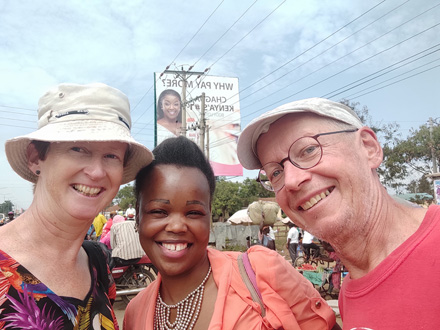
Obama country
Kenyans have spunk. They are confident and they make their presence felt. We met PhD students who despite growing up in villages that are off the grid, still made it to university and attend international conferences to discuss global issues and their impact on rural Africa. This get up and go is personified in the Obama story. Barack Obama’s father was born in this area of rural Southwest Kenya and still his son made it to the White House. One generation is all it took! Actually, we were surprised by the lack of pride or excitement shown by the locals when we discussed Obama’s origin. This is in stark contrast to the Irish reaction when claiming Barack Obama’s great-grandfather on the maternal side!

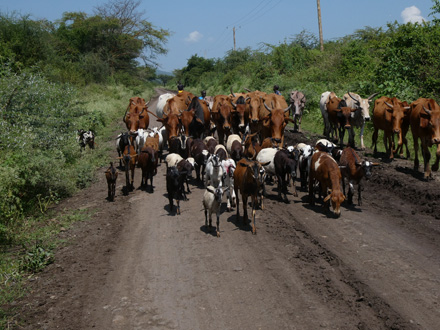
Time for change!
In other East African countries, “Give me money” was a chant that became so common, we hardly even noticed it anymore. But the Kenyan’s are a step ahead. They ask you how you are doing and as soon as you confirm that everything is fine, they then drop the clever phrase: “So, maybe you can help me then!” This traditional view of the White Saviour is in stark contrast to the more recent desire to free themselves of the shackles of colonialism and stand on their own two feet. Empowerment is the new buzz word.
It is time for the West to respect this wish and give Africa a chance to find its way. Pumping in foreign aid with western conditions is not the route the Africans want to take. China is a much more interesting donor, on the short term, at least. Eleven months cycling in Africa has shown us time and time again that foreign aid will only work if it’s in the form of education with sustainable goals… How long will it take for the West to get this message?
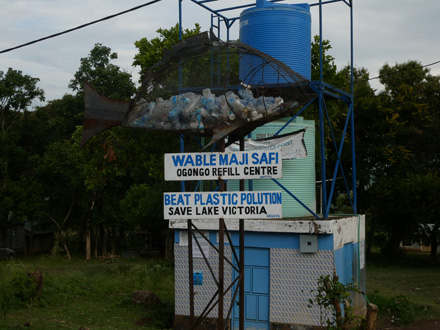

Coffins and flowers
Cross-border traffic between Kenya and Uganda is in the form of … coffins! Yes, you read it correctly – coffins! When we crossed the border into Kenya, the only traffic we had for kilomenters on end was motorbikes transporting coffins across the border into Uganda. Could this be a creative smuggling operation?
If you have bought roses or lilies recently in Europe, the chances are they were grown in Kenya. We came across a lot of polytunnels with flowers for export and these were the first polytunnels we had seen since the polythene protection over the table grapes along the Orange River in Southern Namibia.
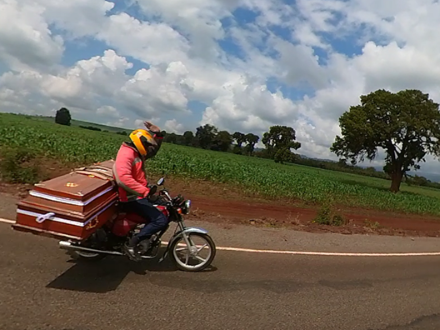
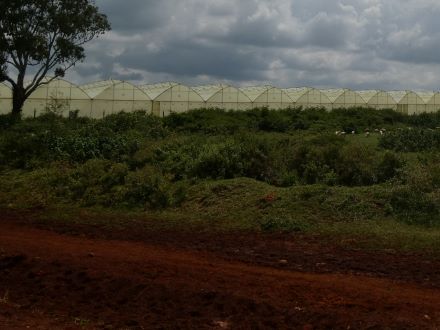
On the shores of Lake Victoria
Bordered by Kenya, Uganda and Tanzania, Lake Victoria is Africa’s largest lake. At almost 60,000 km2 it is second only in surface area to Lake Superior in North America… and is about 1.5 times the size of Switzerland!
We enjoyed its sandy beaches, tasty tilapia, island life, diving kingfishers, lively fish markets and friendly locals over the last few months. And our few days on Takawiri Island to escape the hustle and bustle of mainland Kenya was a proper tonic.
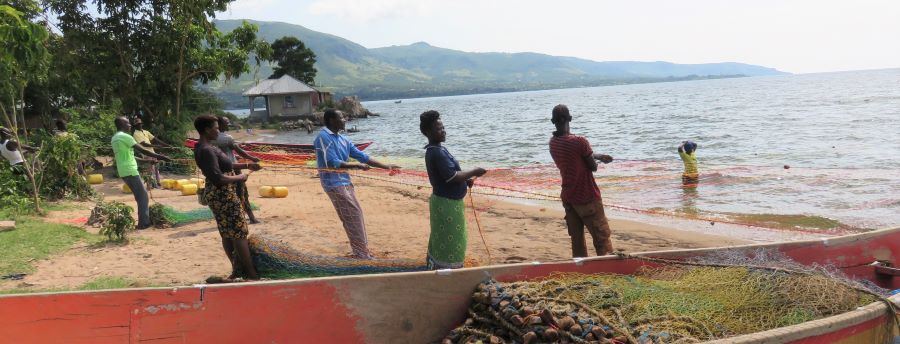


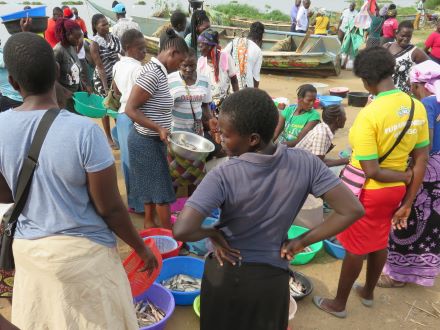
Churches a dime a dozen!
On Saturdays and Sundays Kenya comes to life with throngs of worshipers, clad in ankle-length gowns and head scarves/turbans, making their way to church, where singing, chanting, dancing, jumping and drumming continues for hours on end.
The concentration of churches is phenomenal, and with stiff competition to gain followers, it seems the louder, the better! Darina popped into the Sayun Roho Israel Church of God in Homa Bay and emerged two hours later leaving the drums and chanting to continue for at least another three.


Navigation through East Africa
For years we have been using the navigation app Komoot to plan our trips. It has guided us safely through rice fields in Sri Lanka and mine fields in Bosnia. It found us the most elegant of shortcuts in Mauritius and adventurous alternatives on the Canary Islands. We often marvelled at its out-of-the box suggestions.
Of course, there were times when we questioned the wisdom of following its trails. In all fairness, why would we leave the idyllic Inn Cycle Path in Austria to cross the river and push through waist-high grass along a loud motorway? Or swap a beautifully paved road for a 30% hiking trail incline?
We are touring cyclists, who enjoy nature and quiet countryside. This, however, does not mean we have an aversion to tarmac. If we have to insert twenty waypoints to ensure the route sticks to a main road for a 20km stretch, then there is something amiss. We need to go places too… without exploring everyone’s back garden en route! This is unfortunately the experience we have had in East Africa.
Traumatised by Komoot’s recent antics, when Kurt looks at a piece of modern art, all he sees is a jumble of arrows and wiggly lines resembling an East Africa Komoot route!

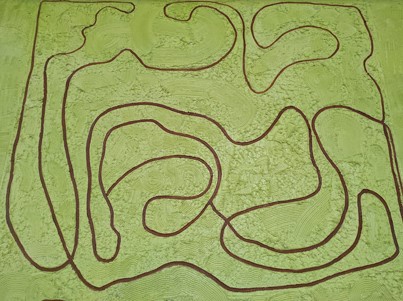
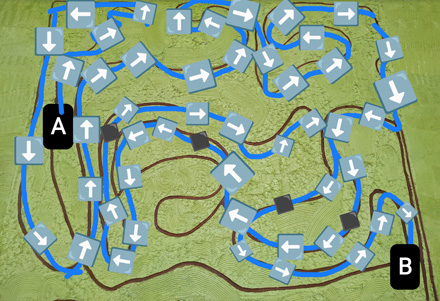
Luo tribe
The polygamous Luo tribe has its stronghold in this region of Southwest Kenya. Thimlich Ohinga is a settlement of three families dating back 600 years. A dry stone wall enclosure protected the thatched dwellings and cattle kraals/pens. Each wife had a house of her own and the first wife was the decision maker for the whole family. Even today, Luo men aim to have as many wives as they can afford
.


Gold mining
We could hear the crushers way off in the distance as we descended the rough gravel track to Osiri gold mine. The place was a hive of activity, everyone going about their daily business around their corrugated metal homes. They all had their role ranging from digging, hammering, sorting, crushing, washing, sieving, drying, buying and selling.
A hundred people are employed in this community gold mine project and the whole scene is nothing short of a gold rush film set from yesteryear. It’s Wild West country out there and there’s gold for a taking! Everyone seems to make a living and beyond crushers, the work is all done manually. What a fascinating place!
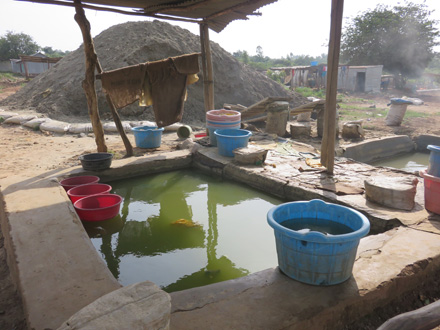

Food
Breakfasts often included eggs and bread/mandazi (donut) with tea/coffee and juice. More traditionally, we would have also had a serious carb overload with ugali, millet porridge, sweet potatoes and cassava. Closer to the Tanzanian border, beans and chapati reappeared.
Lunch in local roadside foodstalls was the typical ugali (maize porridge) with chicken, fish, “cow” or goat and spinach or greens of some sort. Dinner was similar, but we often had it wherever we were staying. And with 100,000 Indians living in Kenya, samosas are also widely available. We even enjoyed a masala dosa in Kisumu! Main courses cost between 200 and 700 Kenyan Schillings (€1.30 – €4.50).
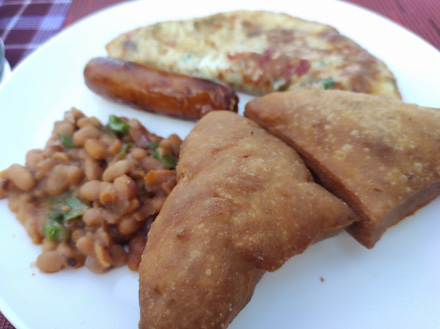
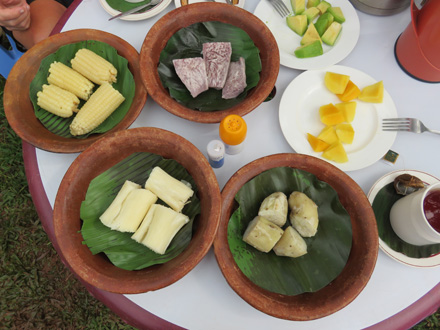

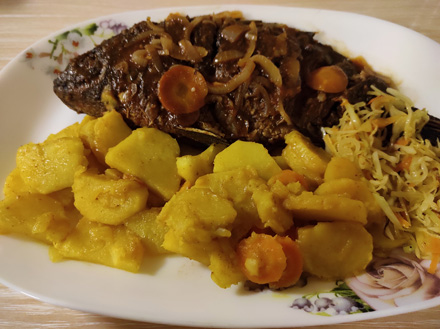
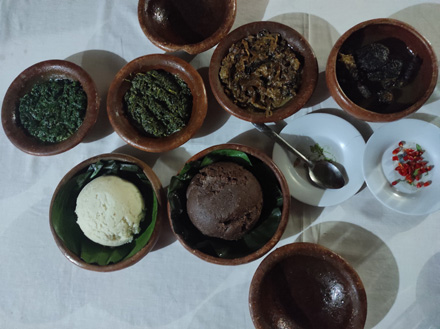
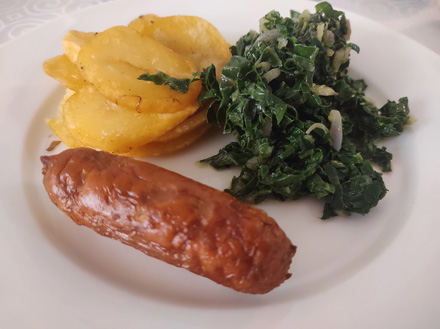
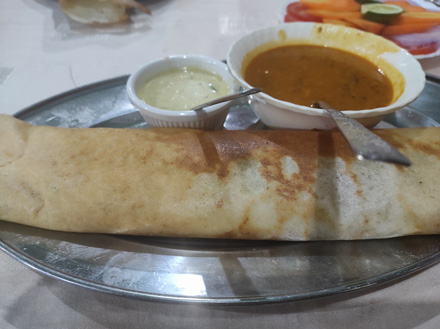
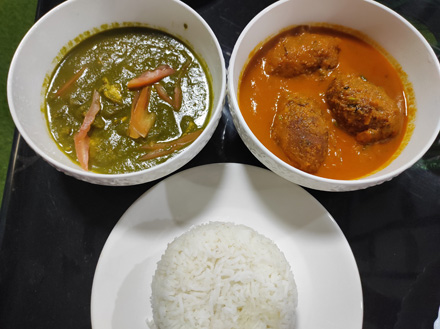
Accommodation
On our short route in Kenya we hit towns on a daily basis. For that reason, we generally got a room for the night and paid between €8 and €30 for a double room, often with breakfast included. The standard was high, the rooms were spotless and the mosquito nets intact!

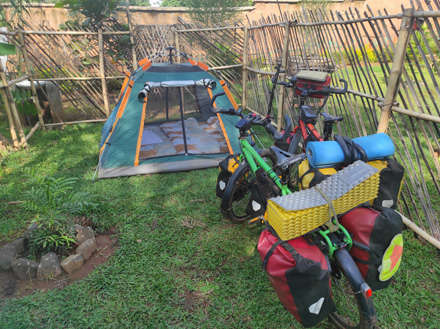
The verdict!
Kenya was loud and hectic and the locals forward and confident. We felt as if we had entered a national competition in which speed triumphs over participation and striving to be number one is the order of the day. Kenyans are go-getters and doers. They will go places. If Darina is to fit in, she’s going to have to enhance her competitive spirit and seriously increase her average speed!
